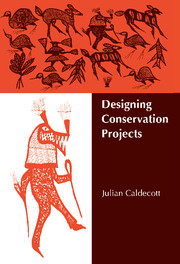Book contents
- Frontmatter
- Contents
- Foreword by Daniel H. Janzen
- Preface
- Acknowledgements
- 1 Introduction
- 2 Baram River, Sarawak
- 3 Cross River, Nigeria
- 4 Siberut and Flores Islands, Indonesia
- 5 Forest fragments in China and the Philippines
- 6 Costa Rican linkage projects
- 7 Irian Jaya, Indonesian New Guinea
- 8 Project themes and practicalities
- 9 Options for conservation
- 10 Options for development
- 11 Options for changing people's minds
- 12 Summary and conclusions
- Glossary
- Bibliography
- Index
6 - Costa Rican linkage projects
Published online by Cambridge University Press: 04 February 2010
- Frontmatter
- Contents
- Foreword by Daniel H. Janzen
- Preface
- Acknowledgements
- 1 Introduction
- 2 Baram River, Sarawak
- 3 Cross River, Nigeria
- 4 Siberut and Flores Islands, Indonesia
- 5 Forest fragments in China and the Philippines
- 6 Costa Rican linkage projects
- 7 Irian Jaya, Indonesian New Guinea
- 8 Project themes and practicalities
- 9 Options for conservation
- 10 Options for development
- 11 Options for changing people's minds
- 12 Summary and conclusions
- Glossary
- Bibliography
- Index
Summary
Introduction
International awareness of biodiversity in Costa Rica was sharply increased during 1990–91 by a succession of articles in the technical literature (Eisner, 1990; Tangley, 1990; Gámez, 1991a, 1991b; Janzen, 1991; Sandlund, 1991), popular science journals (Aldhous, 1991; Joyce, 1991; Wille, 1991), and newspapers (Lyons, 1991). The immediate focus of much of this attention was the Costa Rican National Biodiversity Institute (INBio), which had embarked on an ambitious inventory project aiming to document all Costa Rica's 500 000 or so native species. This was especially newsworthy at a time when the world's governments were beginning to negotiate the Convention on Biological Diversity. A startling additional factor was that INBio had just signed a multi-million dollar biodiversity prospecting contract with Merck & Co., the world's largest pharmaceutical corporation. The aim of this was to establish terms for INBio and Merck to collaborate in finding and developing commercial products from amongst the country's wild species.
It soon became clear that the biodiversity inventory and prospecting contract were only two aspects of a much more comprehensive response to conservation issues in Costa Rica. Presentations by scientists linked to INBio, such as that by Daniel Janzen in London in October 1991, showed that the inventory process was spinning off a variety of new concepts and techniques. Rural people were working as parataxonomists, and tens of thousands of specimens were being processed at INBio and labelled with unique, computer- legible bar codes. Meanwhile, data on biodiversity were being managed within interactive databases, which had been specially designed both to serve the needs of many different users and to safeguard Costa Rica's national interests.
- Type
- Chapter
- Information
- Designing Conservation Projects , pp. 110 - 134Publisher: Cambridge University PressPrint publication year: 1996



